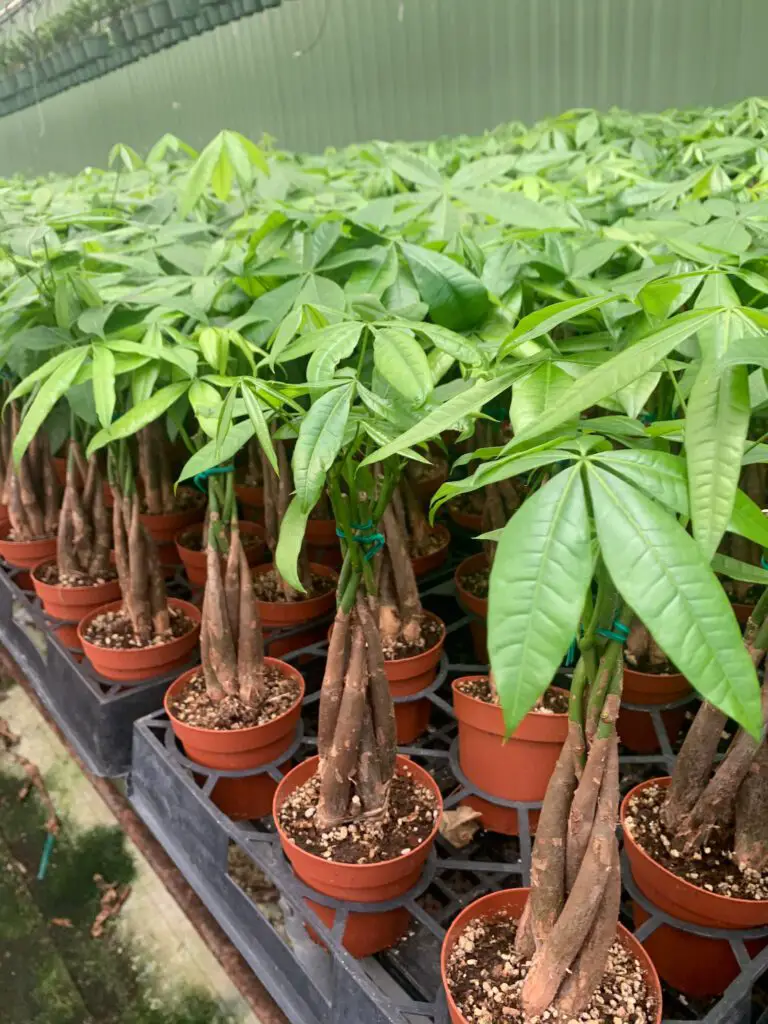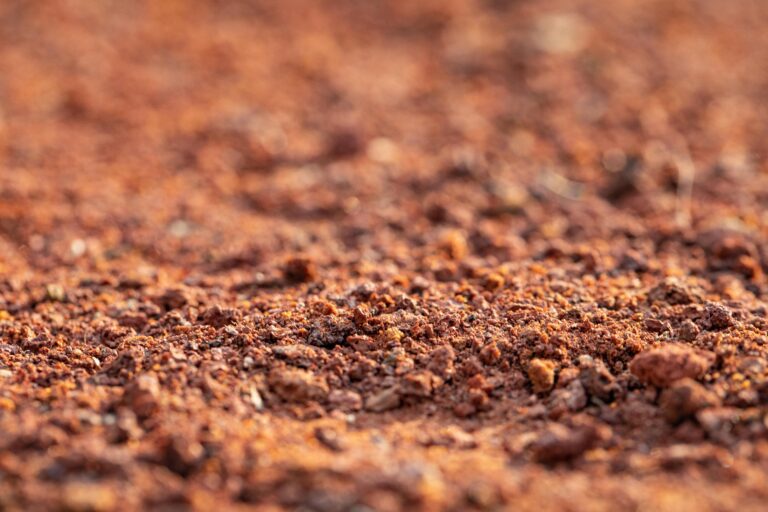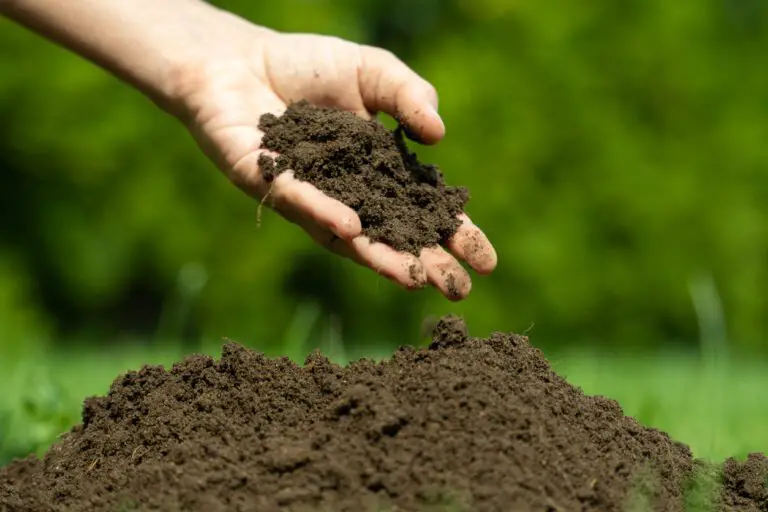How to Automate Your Hydroponic Garden with the Amazing Automatic Dose System!
Understanding the Benefits of Automating Your Hydroponic Garden
Automating your hydroponic garden can offer numerous benefits that will revolutionize your gardening experience. By embracing automation, you can achieve higher efficiency, increased productivity, and enhanced control over your plants’ growth and development. With the help of advanced technologies, such as the automatic dose system, you can create the optimal nutrient balance for your crops, leading to healthier plants and higher yields.
One of the primary advantages of automating your hydroponic garden is the significant time savings it offers. With automation, you no longer need to manually mix and measure nutrient solutions or monitor and adjust pH levels. Instead, the automatic dose system takes care of these tasks for you, providing precise and accurate dosing of nutrients and maintaining the optimal pH level in your reservoir. This allows you to focus your time and energy on other important aspects of your gardening, such as tending to your plants’ overall health and growth. Moreover, automation reduces the risk of human error, ensuring consistent and reliable nutrient delivery, which is crucial for the successful cultivation of your crops.
In addition to saving time and effort, automating your hydroponic garden also improves the overall efficiency of your cultivation process. The automatic dose system continuously monitors and adjusts nutrient levels, ensuring that each plant receives the appropriate amount of nutrients at the right time. This optimized nutrient management promotes balanced growth, minimizes nutrient waste, and maximizes the utilization of resources, thereby enhancing the health and vitality of your plants. By eliminating the guesswork and manual intervention, automation allows for a more precise and controlled feeding regimen, leading to improved crop quality and higher yields.
• Automation saves time by eliminating the need for manual mixing and measuring of nutrient solutions.
• The automatic dose system maintains optimal pH levels in the reservoir, removing the need for constant monitoring and adjustment.
• By reducing human error, automation ensures consistent and reliable nutrient delivery.
• Automating your hydroponic garden improves overall efficiency by continuously monitoring and adjusting nutrient levels.
• This optimized nutrient management promotes balanced growth, minimizes waste, and maximizes resource utilization.
• Automation eliminates guesswork and allows for a more precise feeding regimen.
• Precise control leads to improved crop quality and higher yields.
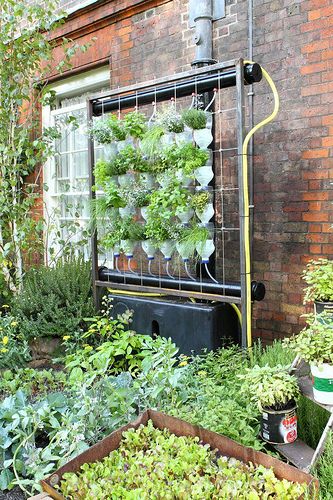
Exploring the Basics of Hydroponic Gardening
Hydroponic gardening is a modern and innovative way to grow plants without soil, utilizing a nutrient-rich water solution instead. This method offers numerous benefits, making it an attractive option for gardening enthusiasts. One of the key advantages is the ability to control and optimize the growing conditions for plants, resulting in faster growth, higher yields, and healthier plants overall.
Unlike traditional gardening, hydroponics allows for precise control of nutrient levels, pH balance, and water availability, ensuring that plants receive all the necessary elements for their optimal growth. This control also eliminates the risk of nutrient deficiencies or toxicities, as the nutrient solution can be adjusted according to the specific requirements of different plant varieties. Furthermore, by eliminating the need for soil, hydroponic gardening reduces the risk of pests, diseases, and weed growth, making it a more efficient and sustainable method of cultivation.
In addition to these benefits, hydroponic gardening also offers increased space efficiency. The plants grown hydroponically do not require extensive root systems to search for nutrients in the soil, allowing for closer spacing and maximizing the use of available space. This makes it ideal for urban environments or areas with limited gardening space. Moreover, hydroponics enables year-round cultivation, as the controlled indoor environment can be adjusted to suit the specific needs of different plant species, regardless of the external weather conditions.
Overall, hydroponic gardening provides a promising solution for those looking to explore the world of plant cultivation. With its ability to optimize growth conditions, increase crop yields, and save space, it presents a sustainable and efficient alternative to traditional gardening methods. Whether you are a beginner or an experienced gardener, hydroponics offers an exciting opportunity to experiment, innovate, and reap the rewards of a flourishing garden.
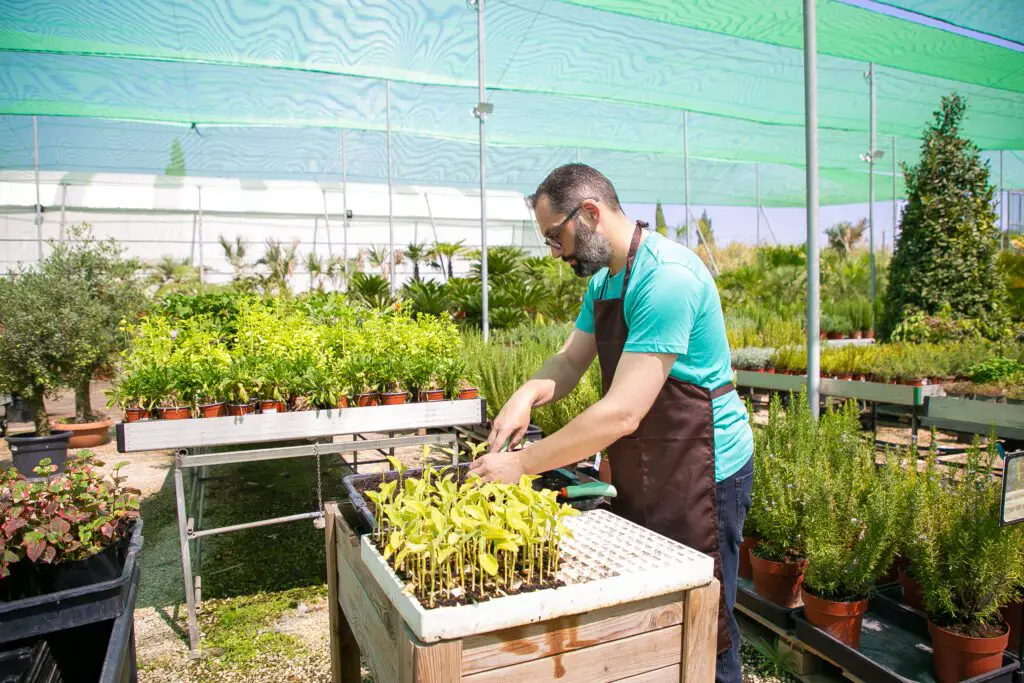
• Hydroponic gardening allows for precise control of nutrient levels, pH balance, and water availability.
• Nutrient solution can be adjusted according to the specific requirements of different plant varieties.
• Eliminates the risk of nutrient deficiencies or toxicities.
• Reduces the risk of pests, diseases, and weed growth.
• Ideal for urban environments or areas with limited gardening space.
• Increased space efficiency allows for closer spacing and maximizing use of available space.
• Enables year-round cultivation regardless of external weather conditions.
• Presents a sustainable and efficient alternative to traditional gardening methods.
Introducing the Amazing Automatic Dose System
Hydroponic gardening offers numerous advantages over traditional soil-based gardening, such as increased plant growth, improved nutrient absorption, and efficient use of resources. And when it comes to automating this innovative gardening technique, the amazing Automatic Dose System takes things to a whole new level.
The Automatic Dose System is a cutting-edge technology designed to simplify and streamline the nutrient-dosing process in hydroponic gardens. This state-of-the-art system allows precise and accurate dosing of essential nutrients, ensuring that plants receive the optimal amount of nutrients they need for healthy growth. Automating the nutrient delivery process eliminates the need for manual measuring and eliminates guesswork, making it an invaluable asset for both novice and experienced hydroponic gardeners.
With its user-friendly interface and customizable settings, the Automatic Dose System allows gardeners to easily adjust nutrient levels based on plant requirements, growth stages, or specific crop varieties. This level of precision and control not only promotes exceptional plant health but also maximizes yields, making it a must-have tool for serious gardeners and commercial hydroponic operations alike. So, harness the power of automation with the amazing Automatic Dose System and take your hydroponic garden to new heights of efficiency and productivity.
• The Automatic Dose System simplifies and streamlines the nutrient dosing process in hydroponic gardens.
• It ensures precise and accurate dosing of essential nutrients for optimal plant growth.
• The system eliminates manual measuring and guesswork, making it suitable for both novice and experienced gardeners.
• With a user-friendly interface, it allows easy adjustment of nutrient levels based on plant requirements, growth stages, or specific crop varieties.
• This precision and control promote exceptional plant health and maximize yields.
• The Automatic Dose System is a valuable tool for serious gardeners and commercial hydroponic operations.
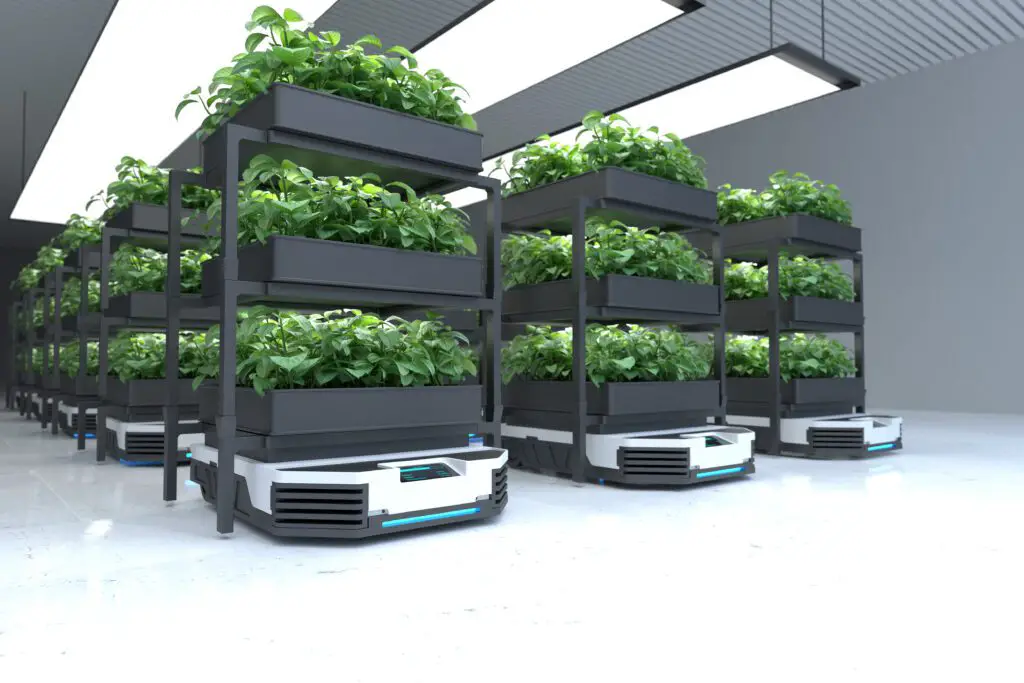
Examining the Key Features of the Automatic Dose System
The Automatic Dose System, a key component in automating your hydroponic garden, offers a range of features that significantly enhance the efficiency and effectiveness of your cultivation practices. One of the most notable features is its precision dosing capabilities. With the ability to accurately measure and dispense nutrients, the Automatic Dose System ensures that your plants receive the optimal amount of essential elements for growth and development. This precise dosing not only maximizes nutrient absorption but also minimizes waste, making it a sustainable and cost-effective solution.
Another key feature of the Automatic Dose System is its customizable programming options. Designed to adapt to the specific needs of various plants and growth stages, this system allows you to create personalized nutrient schedules and dosage levels. Whether you are cultivating leafy greens, herbs, or flowering plants, you can easily configure the system to provide the right balance of nutrients at different stages of growth. This flexibility empowers you with greater control over your hydroponic garden, enabling you to optimize plant health, vigor, and ultimately, yield.
• Precision dosing capabilities ensure accurate measurement and dispensing of nutrients
• Maximizes nutrient absorption and minimizes waste, making it sustainable and cost-effective
• Customizable programming options adapt to the specific needs of different plants and growth stages
• Allows for personalized nutrient schedules and dosage levels
• Provides greater control over the hydroponic garden, optimizing plant health, vigor, and yield
Assessing the Importance of Automation in Hydroponic Gardening
Automation plays a vital role in the world of hydroponic gardening, offering numerous benefits to gardening enthusiasts. By automating various aspects of the gardening process, such as nutrient dosing, water distribution, and environmental controls, gardeners can experience increased efficiency, improved plant health, and higher yields.
One of the key advantages of automation in hydroponic gardening is the precise control it offers over nutrient levels. Through the use of automated dosing systems, gardeners can accurately measure and deliver the necessary nutrients to their plants, ensuring optimal growth and development. This eliminates the guesswork and potential human error associated with manual nutrient management, allowing for consistent and balanced nutrient delivery.
Moreover, automation enables gardeners to closely monitor and adjust environmental conditions within their hydroponic gardens. By integrating sensors and controllers, parameters such as temperature, humidity, pH levels, and light intensity can be continuously measured and regulated. This ensures that plants are provided with the ideal growing conditions throughout their growth cycles, promoting healthier and more vigorous growth.
In addition to the efficiency and precision brought about by automation, time-saving is also a significant advantage. By automating repetitive tasks, gardeners can free up their time to focus on other important aspects of their gardens. This can include conducting research, experimenting with new techniques, or simply enjoying their garden without being burdened by tedious maintenance tasks.
Considering these benefits, it is evident that automation offers a compelling advantage in hydroponic gardening. By harnessing technology to streamline processes and enhance control, gardeners can achieve remarkable results in terms of plant health, productivity, and overall gardening experience. In the next sections of this article, we will explore the various components and strategies involved in creating an automated hydroponic garden, providing useful insights and guidance for gardening enthusiasts.
• Precise control over nutrient levels with automated dosing systems
• Elimination of guesswork and human error in nutrient management
• Continuous monitoring and adjustment of environmental conditions
• Regulation of temperature, humidity, pH levels, and light intensity
• Promotion of healthier and more vigorous plant growth
• Time-saving through automation of repetitive tasks
• Opportunity to focus on research, experimentation, or enjoyment of the garden
Choosing the Right Components for Your Automated Hydroponic Garden
When it comes to setting up an automated hydroponic garden, choosing the right components is crucial for ensuring optimal efficiency and productivity. Each component plays a vital role in the overall system, so it’s important to select high-quality, reliable equipment that meets your specific needs and goals.
First and foremost, the heart of any automated hydroponic system is the nutrient delivery system. This includes pumps, reservoirs, and irrigation lines, all of which work together to provide the plants with the necessary water and nutrients. It’s essential to choose pumps that are reliable, energy-efficient, and have adjustable flow rates to accommodate different plant varieties and growth stages. Similarly, selecting a reservoir with ample size to hold the nutrient solution and airtight seals to prevent leakage is vital for maintaining a stable and controlled growing environment. Additionally, investing in high-quality irrigation lines that are resistant to clogging and can effectively distribute the nutrient solution evenly to the plants is key to ensuring optimal nutrient uptake.
Another crucial component to consider is the lighting system. High-intensity LED lights are often preferred for automated hydroponic gardens due to their energy efficiency, low heat production, and ability to provide the right light spectrum for plant growth. Look for lights that offer adjustable intensity and customizable schedules to mimic natural sunlight and accommodate different plant species. Additionally, investing in light fixtures with built-in cooling systems can help maintain optimal growing temperatures and extend the lifespan of the lights.
In summary, choosing the right components for your automated hydroponic garden sets the foundation for success. From nutrient delivery systems to lighting, it’s important to prioritize quality and functionality to ensure optimal plant growth and yield. By investing in reliable and efficient equipment, you can create a highly productive and sustainable automated hydroponic system.
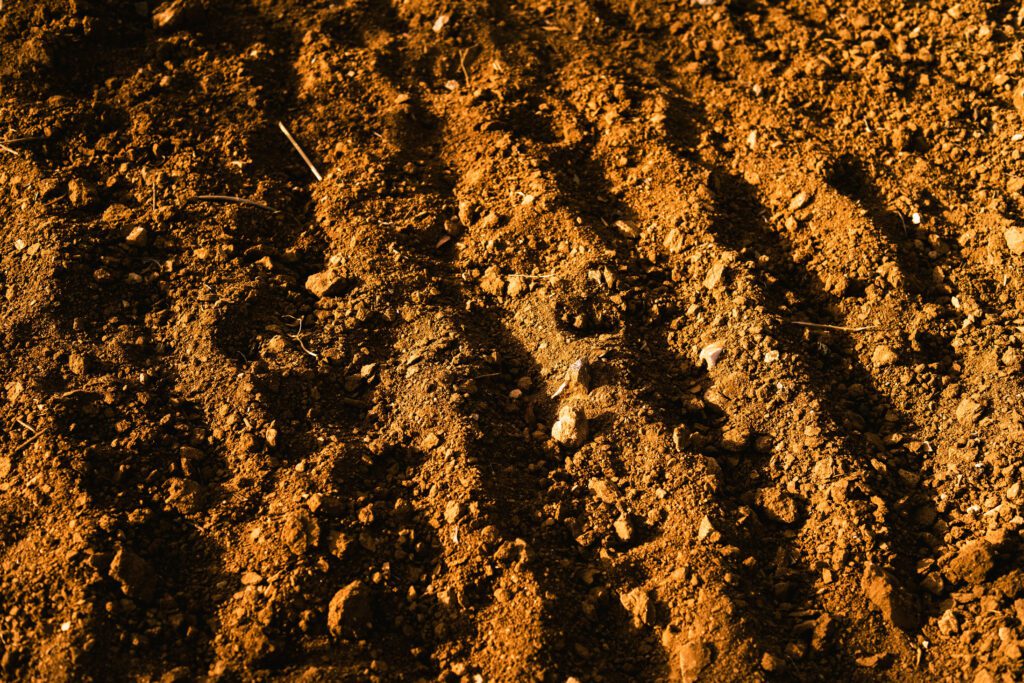
• Select pumps that are reliable, energy-efficient, and have adjustable flow rates
• Choose a reservoir with ample size and airtight seals to prevent leakage
• Invest in high-quality irrigation lines that resist clogging and distribute nutrient solution evenly
• Opt for high-intensity LED lights for energy efficiency and the right light spectrum
• Look for lights with adjustable intensity and customizable schedules
• Consider investing in light fixtures with built-in cooling systems
• Prioritize quality and functionality in all components chosen
Setting Up Your Hydroponic Garden for Automation
When setting up your hydroponic garden for automation, there are several key components you need to consider. First and foremost, you will need a reliable system for nutrient delivery. This can be achieved through the use of an automatic dose system, which ensures that the right amount of nutrients is provided to your plants at the right time. The automatic dose system eliminates the hassle of manually measuring and mixing nutrients, allowing for precise and consistent dosing throughout the growth cycle of your plants.
In addition to the automatic dose system, you will also need to invest in sensors and controllers. These devices are essential for monitoring and maintaining optimal growing conditions in your garden. Sensors can measure important variables such as pH levels, temperature, humidity, and nutrient levels, providing you with real-time data that can help you make informed decisions about your crops. Controllers, on the other hand, allow you to automate various processes in your hydroponic system, such as adjusting nutrient dosages or activating pumps and fans based on pre-set parameters.
By setting up your hydroponic garden with these automation components, you can streamline your gardening process and achieve more consistent and efficient results. Not only will automation save you time and effort, but it will also maximize the potential of your plants by providing them with precise and optimized growing conditions. With the right setup, you can ensure that your hydroponic garden thrives and yields bountiful harvests, all while minimizing the risk of human error. So, take the plunge into automation and unlock the full potential of your hydroponic gardening endeavors.
• Automatic dose system: Ensures precise and consistent nutrient delivery to plants
• Sensors: Monitor pH levels, temperature, humidity, and nutrient levels in real-time
• Controllers: Automate processes such as adjusting nutrient dosages or activating pumps and fans
• Streamline gardening process for more efficient results
• Save time and effort by eliminating manual measuring and mixing of nutrients
• Maximize plant potential with optimized growing conditions
• Minimize the risk of human error for a thriving hydroponic garden
Installing and Configuring the Automatic Dose System
Installing and configuring the automatic dose system for your hydroponic garden is a crucial step toward achieving precision and efficiency in nutrient delivery. To begin the process, it is essential to gather all the necessary components and tools. These may include the automatic dose system itself, compatible controllers, sensors, tubing, and connectors. Carefully follow the manufacturer’s instructions for assembling and connecting these components to ensure a seamless installation.
Once the hardware is in place, it is time to configure the automatic dose system. This involves setting up the desired nutrient solution ratios and corresponding dosing schedules. The system will typically have user-friendly software or interface that allows you to input these parameters. Take the time to understand the functionalities and options available to make the most of this automation. The precise configuration will depend on factors such as plant type, growth stage, and environmental conditions. By fine-tuning these settings, you can tailor the nutrient delivery to meet the specific needs of your hydroponic garden.
In conclusion, the installation and configuration of the automatic dose system play a fundamental role in enhancing the accuracy and convenience of nutrient delivery in your hydroponic garden. By following the manufacturer’s instructions and taking the time to properly configure the system, you can optimize the growth and yield of your plants while minimizing waste and effort.
• Gather all necessary components and tools, including the automatic dose system, controllers, sensors, tubing, and connectors.
• Follow the manufacturer’s instructions for assembling and connecting these components to ensure a seamless installation.
• Configure the automatic dose system by setting up nutrient solution ratios and dosing schedules.
• Take advantage of user-friendly software or interfaces provided by the system to input parameters effectively.
• Understand the functionalities and options available in order to optimize automation.
• Fine-tune settings based on plant type, growth stage, and environmental conditions for tailored nutrient delivery.
Overall Benefits:
– Enhances accuracy and precision in nutrient delivery
– Increases efficiency by automating dosing schedules
– Optimizes plant growth and yield through customized configurations
– Minimizes waste of nutrients
– Reduces manual effort required for nutrient management.
Understanding the Calibration Process for Accurate Dosing
To ensure accurate dosing in your hydroponic garden, it is crucial to understand the calibration process. Calibration refers to the adjustment of your automatic dose system to deliver precise nutrient solutions to your plants. This process is essential because even slight variations in nutrient levels can have a significant impact on plant growth and yield.
The calibration process involves comparing the actual nutrient levels with the target levels set by the system. By calibrating your automatic dose system regularly, you can ensure that the nutrient solutions it dispenses are accurate and tailored to the specific needs of your plants. Calibration typically involves testing and adjusting elements such as pH, electrical conductivity (EC), and nutrient concentrations.
One important aspect of calibration is the use of reliable measurement tools. pH meters, EC meters, and nutrient analyzers are commonly used to assess nutrient levels in the solution. These tools should be calibrated using pH buffer solutions and known EC solutions. It is recommended to calibrate your measurement tools before every use to maintain accuracy.
Once your measuring tools are calibrated, you can proceed to test the nutrient levels in your hydroponic system. You will need to take samples of the nutrient solution from various points in your system, such as the tank and the irrigation lines. These samples should be analyzed for pH, EC, and nutrient concentrations.
Based on the analysis, you can compare the measured values with the target values. If there are discrepancies, adjustments can be made to the dose settings of your automatic dose system. For example, if the pH measurement indicates a deviation from the target value, you can adjust the pH dosing accordingly.
Overall, the calibration process ensures that your automatic dose system accurately delivers the optimal nutrient solutions required by your hydroponic crops. Regular calibration and monitoring of nutrient levels are vital to maintaining healthy plant growth and maximizing yields. By investing time and effort into understanding and implementing the calibration process, you can achieve optimal results in your hydroponic garden.
• Calibration is crucial for accurate dosing in hydroponic gardens
• Even slight variations in nutrient levels can impact plant growth and yield
• Calibration involves comparing actual nutrient levels with target levels set by the system
• Regular calibration ensures that nutrient solutions are tailored to plant needs
• pH meters, EC meters, and nutrient analyzers are important measurement tools
• Measurement tools should be calibrated before every use for accuracy
• Samples of the nutrient solution need to be taken from various points in the system
• Samples should be analyzed for pH, EC, and nutrient concentrations
• Measured values are compared with target values to make adjustments if needed
• Adjustments can be made to dose settings based on analysis results
• Regular calibration and monitoring of nutrients is vital for healthy plant growth
• Understanding and implementing the calibration process leads to optimal results
Monitoring and Adjusting Nutrient Levels in Your Hydroponic Garden
Monitoring and adjusting nutrient levels in your hydroponic garden is crucial for ensuring the optimal growth and development of your plants. By regularly assessing and fine-tuning the nutrient balance, you can provide your plants with the essential elements they need for healthy and vigorous growth.
One effective method for monitoring nutrient levels is through regular water testing. This allows you to measure the various nutrient concentrations in your hydroponic solution, such as nitrogen, phosphorus, potassium, calcium, magnesium, and trace elements. By analyzing the test results, you can determine whether the nutrient levels are within the desired range for your specific plants and make any necessary adjustments.
It is important to mention that different plants have unique nutritional requirements, therefore, it is crucial to conduct thorough research or consult with a horticulturist to ensure that you are providing the precise nutrients your plants need. Once you have determined the ideal nutrient levels for your plants, you can adjust the composition of your nutrient solution accordingly. This may involve adding or reducing specific nutrients to maintain the appropriate balance. Regular monitoring and adjustment of nutrient levels will ensure that your plants receive the optimal amount of nutrients, promoting healthy growth and maximizing yield.
• Regular water testing is an effective method for monitoring nutrient levels in a hydroponic garden.
• Nutrient concentrations such as nitrogen, phosphorus, potassium, calcium, magnesium, and trace elements can be measured through water testing.
• Analyzing the test results helps determine if nutrient levels are within the desired range for specific plants.
• Thorough research or consultation with a horticulturist is necessary to understand the unique nutritional requirements of different plants.
• Once ideal nutrient levels are determined, adjustments can be made to the nutrient solution composition.
• Adding or reducing specific nutrients may be required to maintain the appropriate balance.
• Regular monitoring and adjustment of nutrient levels promotes healthy plant growth and maximizes yield.
Exploring Different Types of Sensors and Controllers for Automation
Hydroponic gardening relies heavily on automated systems to ensure optimal growth and nutrient delivery to plants. The key components of these systems are sensors and controllers, which play a crucial role in monitoring and adjusting various environmental factors. In this article, we will explore the different types of sensors and controllers used in hydroponic garden automation.
Sensors are devices that detect and measure specific environmental parameters, such as temperature, humidity, pH levels, and nutrient levels in the solution. These sensors provide essential data that helps in maintaining the ideal growing conditions for plants. For instance, a temperature sensor can help prevent overheating or cold stress, while a pH sensor ensures that the nutrient solution remains within the desired range for optimal nutrient uptake.
Controllers, on the other hand, are responsible for receiving data from sensors and initiating appropriate actions based on predefined parameters. They act as the brains of the automated system, making real-time adjustments to maintain a stable and optimal growing environment. Controllers can regulate factors like temperature, humidity, lighting, pH, and nutrient dosing, ensuring that plants receive the right conditions for growth and development.
In the world of hydroponic gardening, various types of sensors and controllers are available, each designed to monitor and control specific aspects of the growing environment. Temperature and humidity sensors, pH sensors, EC (electrical conductivity) sensors, and light sensors are some commonly used types of sensors. Controllers can range from simple timers and relays to sophisticated microprocessor-based systems that allow for precise control and automation.
Using the right combination of sensors and controllers is crucial for effective automation in hydroponic gardening. By leveraging the power of technology, gardeners can effortlessly monitor and adjust multiple parameters, creating an optimized environment for plant growth. Whether you are a beginner or an experienced gardener, understanding the various types of sensors and controllers available will help you make informed decisions when setting up an automated hydroponic system.
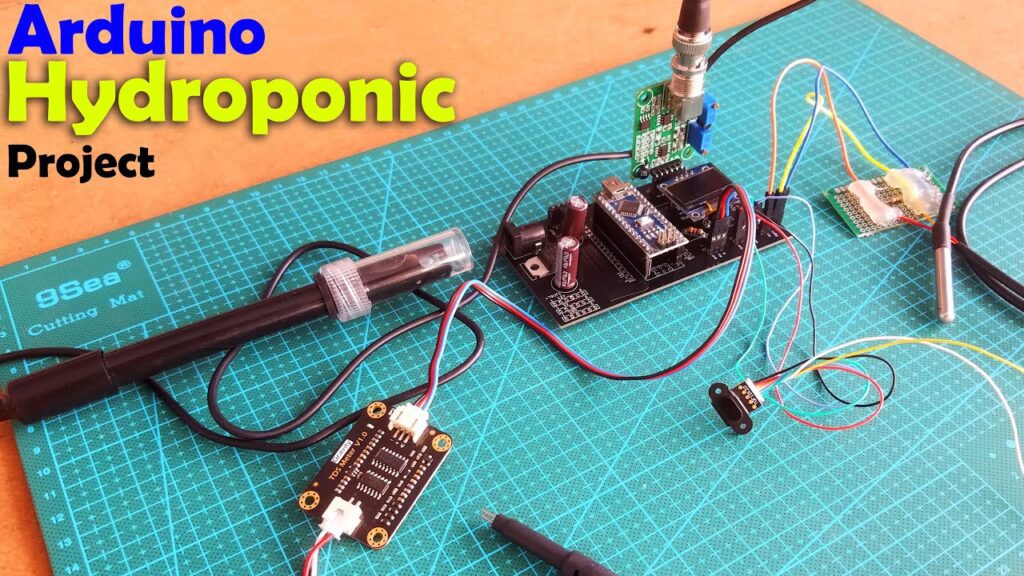
• Sensors are devices that detect and measure specific environmental parameters, such as temperature, humidity, pH levels, and nutrient levels in the solution.
• Controllers receive data from sensors and initiate appropriate actions based on predefined parameters.
• Sensors provide essential data that helps in maintaining ideal growing conditions for plants.
• Temperature sensors help prevent overheating or cold stress.
• pH sensors ensure that the nutrient solution remains within the desired range for optimal nutrient uptake.
• Controllers act as the brains of the automated system, making real-time adjustments to maintain a stable and optimal growing environment.
• Controllers can regulate factors like temperature, humidity, lighting, pH, and nutrient dosing.
• Various types of sensors are available including temperature and humidity sensors, pH sensors, EC (electrical conductivity) sensors,
and light sensors.
• Controllers can range from simple timers and relays to sophisticated microprocessor-based systems.
• Using the right combination of sensors and controllers is crucial for effective automation in hydroponic gardening.
• Technology allows gardeners to effortlessly monitor multiple parameters creating an optimized environment for plant growth.
Troubleshooting Common Issues with the Automatic Dose System
The automatic dose system is an incredible tool that streamlines the process of nutrient delivery in hydroponic gardens. However, like any technological system, it is not immune to occasional issues. Troubleshooting common problems with the automatic dose system is crucial to ensure that your hydroponic garden operates smoothly and your plants receive the optimal nutrients they need for growth.
One potential problem that may arise is inaccurate dosing. This can happen due to factors such as clogged tubes, malfunctioning sensors, or incorrect calibration. To address this issue, start by checking the tubing system for any clogs or obstructions. Clearing the tubes and ensuring they are properly connected can help maintain a consistent flow of nutrients. Additionally, regularly calibrating the system according to the manufacturer’s instructions is essential for accurate dosing. This involves adjusting the sensor readings to match the actual nutrient levels in the reservoir. By regularly checking and maintaining your automatic dose system, you can address issues with inaccurate dosing and ensure that your plants get the precise nutrients they require for healthy growth.
Another common issue that may occur is inconsistent nutrient levels. Fluctuations in nutrient concentration can lead to nutrient deficiencies or toxicities in your plants. When troubleshooting this problem, it is important to consider factors such as the stability of your nutrient solution, the accuracy of your mixing ratios, and the functionality of the nutrient monitoring system. Start by checking the stability of your nutrient solution. Ensure that the pH and temperature are within the optimal range, as these factors can impact the availability of nutrients to your plants.
Additionally, double-check the accuracy of your mixing ratios to ensure that the correct amounts of nutrients are being added to the reservoir. Finally, if you are using a nutrient monitoring system, make sure that the sensors are functioning properly and providing accurate readings. By addressing these factors, you can troubleshoot and resolve issues with inconsistent nutrient levels, promoting healthier plant growth in your hydroponic garden.
In conclusion, troubleshooting common issues with the automatic dose system in your hydroponic garden is essential to maintain optimal nutrient delivery and ensure the healthy growth of your plants. By addressing problems such as inaccurate dosing and inconsistent nutrient levels, you can maximize the performance of your automated system and cultivate thriving plants. Stay tuned for more helpful tips and strategies to enhance your hydroponic gardening experience.
• Inaccurate dosing can occur due to clogged tubes, malfunctioning sensors, or incorrect calibration.
– Check the tubing system for any clogs or obstructions and ensure proper connection.
– Regularly calibrate the system according to the manufacturer’s instructions for accurate dosing.
• Inconsistent nutrient levels can lead to deficiencies or toxicities in plants.
– Check the stability of the nutrient solution by monitoring pH and temperature.
– Double-check the accuracy of mixing ratios to ensure correct amounts of nutrients are added.
– Verify functionality and accuracy of nutrient monitoring system sensors.
• Troubleshooting these issues ensures optimal nutrient delivery and healthy plant growth in hydroponic gardens.
Expanding Your Automated Hydroponic Garden with Additional Features
When it comes to expanding your automated hydroponic garden, there are a plethora of additional features that can take your gardening experience to the next level. One such feature is the incorporation of a pH monitoring and adjustment system. Maintaining optimal pH levels is crucial for the growth and health of your plants in a hydroponic system. By installing a pH monitoring and adjustment system, you can ensure that the pH of your nutrient solution remains within the desired range, providing your plants with the ideal conditions for growth.
Another feature that can greatly enhance your automated hydroponic garden is the inclusion of a temperature and humidity control system. Temperature and humidity are key factors that can significantly impact plant growth and overall garden performance. By integrating a system that can monitor and adjust these variables, you can create the perfect environment for your plants and optimize their growth. Whether it’s a hot summer day or a chilly winter night, you can rest assured knowing that your plants are thriving in the ideal conditions.
By expanding your automated hydroponic garden with these additional features, you can elevate your gardening experience to new heights. Not only can you ensure that your plants are receiving the necessary nutrient solution with adjusted pH levels, but you can also create the optimum growing environment by controlling temperature and humidity. With these enhancements, your hydroponic garden will flourish, providing you with a bountiful harvest of healthy and vibrant plants. So why wait? Start exploring these additional features and take your hydroponic garden to the next level today.
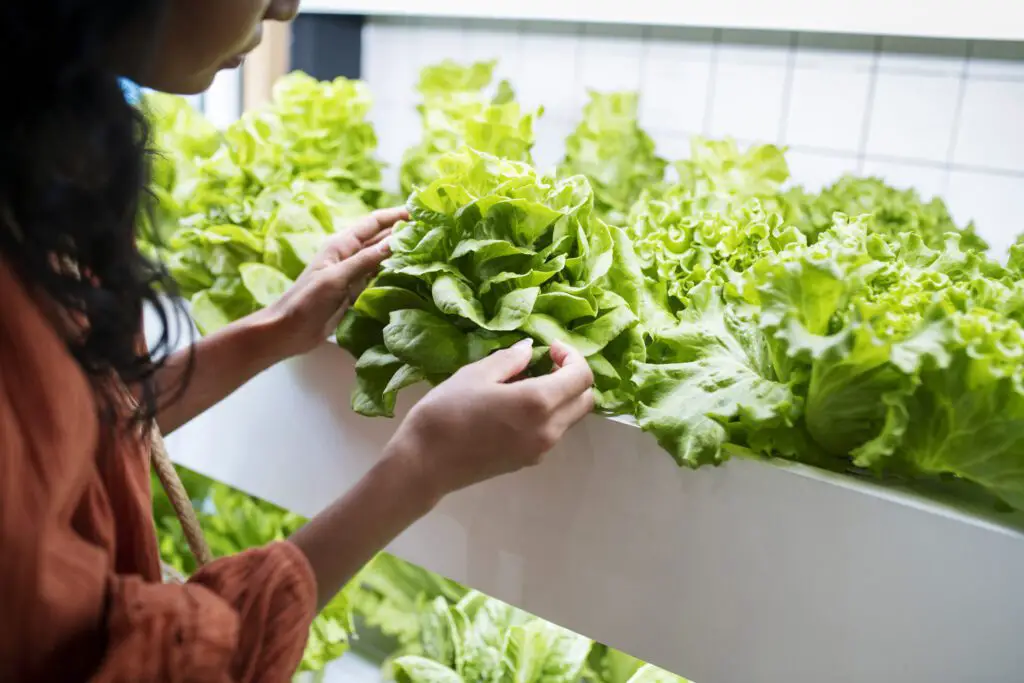
• Incorporating a pH monitoring and adjustment system ensures optimal pH levels for plant growth.
• A temperature and humidity control system creates the perfect environment for plants.
• These additional features enhance the gardening experience and optimize plant growth.
• With adjusted pH levels and controlled temperature/humidity, your hydroponic garden will flourish.
• Explore these features today to elevate your hydroponic garden to new heights.
Integrating Remote Control and Monitoring for Maximum Efficiency
Remote control and monitoring systems can greatly enhance the efficiency of your automated hydroponic garden. By integrating these technologies, you can effectively manage and monitor your garden from anywhere, at any time. With remote control, you can adjust settings, monitor nutrient levels, and control various components of your system with just a few clicks on your smartphone or computer.
One of the key advantages of remote control is the ability to make real-time adjustments to optimize plant growth and yield. For example, if you notice that nutrient levels are not at the desired range, you can quickly make changes to the dosing system without physically being present in the garden. This level of control allows you to respond immediately to any issues or fluctuations, ensuring that your plants receive the precise amount of nutrients they need for healthy growth.
In addition, remote monitoring provides valuable insights into the overall performance of your hydroponic system. You can track important parameters such as temperature, humidity, pH levels, and light intensity from a distance. This data enables you to identify any patterns or trends that may impact the health of your plants, allowing you to make informed decisions and adjustments as needed.
Overall, integrating remote control and monitoring into your automated hydroponic garden offers maximum efficiency and convenience. It allows you to optimize plant growth, minimize human error, and manage your garden effectively, even when you are away. With the ability to make real-time adjustments and access critical data, you can ensure the success of your hydroponic garden and achieve the best possible results.
• Remote control and monitoring systems enhance the efficiency of automated hydroponic gardens
• Integration allows for management and monitoring from anywhere, at any time
• Adjust settings, monitor nutrient levels, and control components remotely with ease
• Real-time adjustments optimize plant growth and yield by responding to issues or fluctuations promptly
• Immediate changes can be made to the dosing system without physically being present in the garden
• Remote monitoring provides valuable insights into the overall performance of the hydroponic system
• Track parameters such as temperature, humidity, pH levels, and light intensity from a distance
• Data enables the identification of patterns or trends that may impact plant health
• Informed decisions can be made based on critical data obtained through remote monitoring
• Integration offers maximum efficiency and convenience for managing automated hydroponic gardens.
Maximizing the Efficiency of Your Automated Hydroponic Garden
To maximize the efficiency of your automated hydroponic garden, it is crucial to focus on several key factors. Firstly, proper nutrient management is essential. By closely monitoring and adjusting nutrient levels in your hydroponic system, you can ensure that your plants receive the ideal balance of essential elements for optimal growth. This can be achieved through regular testing and analysis of your nutrient solution, using sensors and controllers specifically designed for hydroponics.
Additionally, maintaining the ideal environmental conditions is paramount. Temperature, humidity, and light levels all play a crucial role in plant growth. With the help of automated systems, you can easily regulate these variables, ensuring that your plants thrive. Integrated climate control systems and light timers can create the perfect growing environment, resulting in healthy and productive plants.
Furthermore, it is important to regularly monitor and maintain your automated system. Regular cleaning and proper calibration of your equipment will ensure accurate dosing and prevent any potential issues. By conducting routine maintenance checks, you can identify and address any problems promptly, avoiding costly disruptions to your hydroponic garden.
By consistently applying these principles and taking advantage of the capabilities of automated systems, you can maximize the efficiency of your hydroponic garden. With precise nutrient management, ideal environmental conditions, and regular system maintenance, you will create an optimal growing environment for your plants, leading to increased yields and healthier produce.
• Proper nutrient management is crucial for maximizing the efficiency of your automated hydroponic garden.
• Regularly monitor and adjust nutrient levels in your hydroponic system to ensure optimal growth.
• Use sensors and controllers specifically designed for hydroponics to test and analyze your nutrient solution.
• Maintain ideal environmental conditions, including temperature, humidity, and light levels.
• Automated systems can help regulate these variables for optimal plant growth.
• Integrated climate control systems and light timers can create the perfect growing environment.
• Regularly monitor and maintain your automated system to prevent issues and ensure accurate dosing.
• Conduct routine maintenance checks to identify and address any problems promptly.
• By consistently applying these principles, you can maximize the efficiency of your hydroponic garden.
Exploring Advanced Techniques and Strategies for Automation
Advanced techniques and strategies have revolutionized the automation of hydroponic gardens, offering gardeners sophisticated methods to optimize plant growth and yield. One such technique is the implementation of light spectrums tailored to specific plant requirements. By utilizing LED lights, gardeners can adjust the wavelengths of light emitted, providing plants with the ideal spectrum for growth during each stage of their development. This precise control over light conditions allows for faster growth rates and increased production.
Additionally, the integration of sensor technology has enhanced the automation process by providing accurate real-time data on environmental conditions. Gardeners can now monitor factors such as temperature, humidity, pH levels, and nutrient concentrations with ease. This data-driven approach allows for timely adjustments and ensures that plants are always provided with optimal growing conditions for maximum productivity. By utilizing sensor data, gardeners can identify potential issues early on and implement strategies to mitigate them, resulting in healthier plants and higher yields.
Exploring advanced techniques and strategies in automation opens up a plethora of possibilities for gardeners. By harnessing the power of customizable light spectrums and incorporating sensor technology, gardeners can achieve unparalleled precision and control over their hydroponic gardens. With further advancements on the horizon, the potential for even greater efficiency and productivity is boundless.
• Implementation of light spectrums tailored to specific plant requirements
– Utilizing LED lights to adjust wavelengths of light emitted
– Providing plants with the ideal spectrum for growth during each stage of development
– Allows for faster growth rates and increased production
• Integration of sensor technology for accurate real-time data on environmental conditions
– Monitoring factors such as temperature, humidity, pH levels, and nutrient concentrations
– Data-driven approach allows for timely adjustments and optimal growing conditions
– Identifying potential issues early on and implementing strategies to mitigate them
• Possibilities opened up by exploring advanced techniques and strategies in automation
– Harnessing the power of customizable light spectrums
– Incorporating sensor technology
– Achieving unparalleled precision and control over hydroponic gardens
• Potential for even greater efficiency and productivity with further advancements on the horizon.
Enhancing Plant Growth and Yield with the Automatic Dose System
A key factor in the success of any hydroponic garden is the ability to enhance plant growth and maximize yield. One highly effective tool for achieving this is the Automatic Dose System. With its advanced technology and precise nutrient dosing capabilities, this system offers a range of benefits that can significantly impact your garden’s productivity.
The Automatic Dose System is designed to deliver nutrients to your plants in a precise and controlled manner. By automating the dosing process, you can ensure that your plants receive the optimal amount of nutrients they need at all times. This not only eliminates the guesswork involved in manual dosing but also prevents overfeeding or underfeeding, which can have detrimental effects on plant health and growth.
Furthermore, the Automatic Dose System allows you to customize nutrient concentrations based on the specific needs of different plant varieties or growth stages. This level of flexibility enables you to cater to the unique requirements of each plant, ensuring they receive the ideal balance of nutrients for maximum growth and yield. Additionally, the system can be programmed to deliver nutrients at regular intervals, ensuring a consistent supply that promotes healthy and vigorous plant development. By taking the guesswork out of nutrient delivery and providing precise control over dosing, the Automatic Dose System empowers you to optimize plant growth and achieve higher yields in your hydroponic garden.
• The Automatic Dose System automates the nutrient dosing process, ensuring precise and controlled delivery of nutrients to plants.
• Eliminates guesswork involved in manual dosing, preventing overfeeding or underfeeding which can harm plant health and growth.
• Customizable nutrient concentrations allow for catering to the specific needs of different plant varieties or growth stages.
• Provides an ideal balance of nutrients for maximum growth and yield.
• Programmable delivery at regular intervals ensures a consistent supply that promotes healthy and vigorous plant development.
• Empower users to optimize plant growth and achieve higher yields in hydroponic gardens.
What is the Automatic Dose System and how does it enhance plant growth and yield?
The Automatic Dose System is a sophisticated tool that automatically doses nutrients and water to hydroponic plants. By providing precise and consistent nutrient levels, it ensures optimal growth and increased yield.
Can the Automatic Dose System be used for all types of hydroponic plants?
Yes, the Automatic Dose System is designed to be versatile and can be used for a wide range of hydroponic plants, including vegetables, fruits, herbs, and flowers.
How does automation in hydroponic gardening help improve efficiency?
Automation in hydroponic gardening eliminates the need for manual monitoring and dosing, saving time and reducing the risk of human error. It ensures accurate and timely delivery of nutrients, resulting in improved plant health and productivity.
What components are needed to set up an automated hydroponic garden?
To set up an automated hydroponic garden, you will need an Automatic Dose System, nutrient tanks, pumps, sensors, controllers, and a reliable power source. Additionally, a suitable growing medium and plant containers are required.
Is the calibration process for the Automatic Dose System complicated?
The calibration process for the Automatic Dose System is straightforward. It involves adjusting the nutrient and water levels based on the specific needs of your plants. Detailed instructions are provided with the system to ensure accurate dosing.
Can the Automatic Dose System detect and adjust nutrient levels automatically?
Yes, the Automatic Dose System is equipped with sensors that can monitor nutrient levels in the hydroponic solution. Based on the predefined parameters, it can automatically adjust the dosing to maintain optimal nutrient levels.
How can remote control and monitoring be integrated into an automated hydroponic garden?
Remote control and monitoring can be integrated by connecting the Automatic Dose System to a computer or mobile device through a wireless or internet connection. This allows you to monitor and control the system from anywhere, enhancing convenience and efficiency.
Are there any advanced techniques or strategies that can be implemented with the Automatic Dose System?
Yes, advanced techniques such as fertigation (simultaneous irrigation and fertilization) and precision dosing can be implemented with the Automatic Dose System. These techniques further optimize nutrient delivery and enhance plant growth and yield.
Can the Automatic Dose System be expanded with additional features?
Yes, the Automatic Dose System can be expanded with additional features such as pH and temperature control, CO2 supplementation, and light automation. These features enable further customization and optimization of the hydroponic environment.
How does the Automatic Dose System maximize the efficiency of a hydroponic garden?
The Automatic Dose System maximizes efficiency by eliminating manual tasks, ensuring precise nutrient delivery, and enabling remote control and monitoring. This saves time, reduces waste, and enhances overall productivity in the hydroponic garden.

